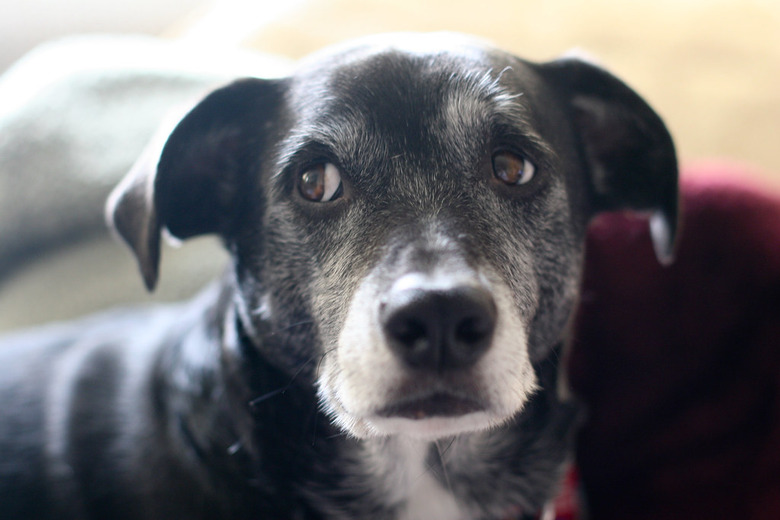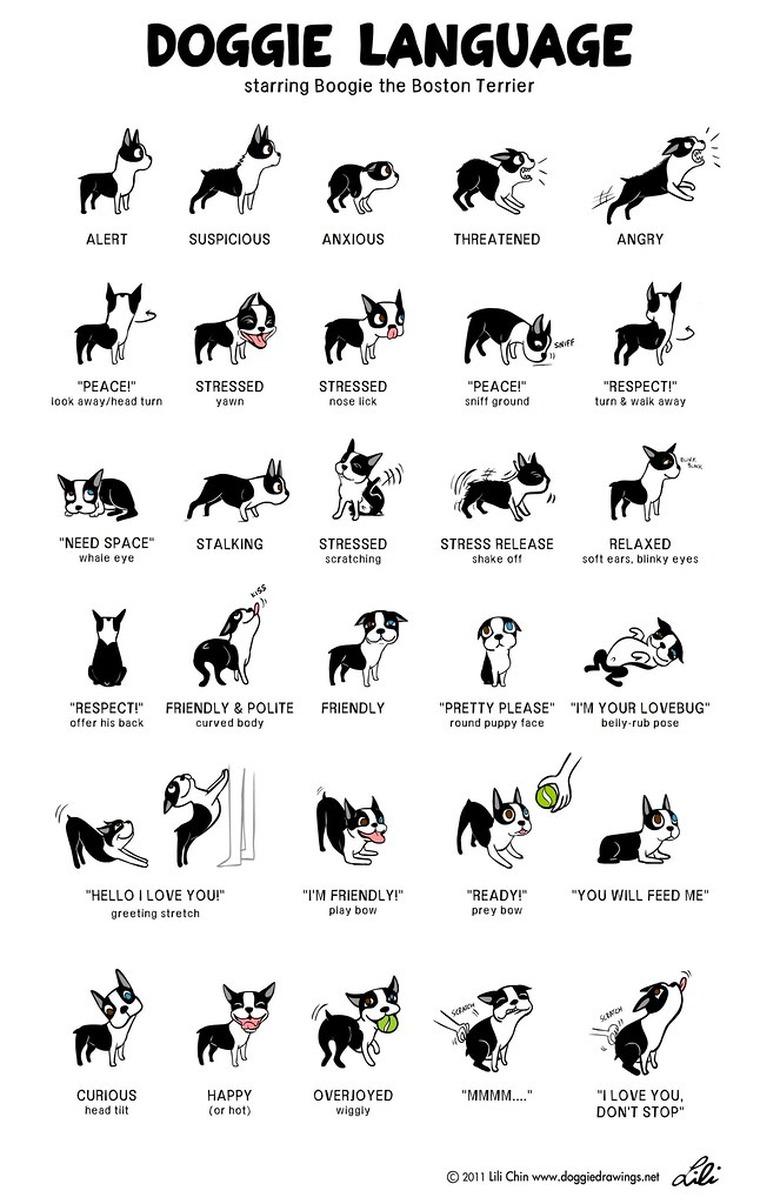Dog Looking To The Side? It's "Whale Eye" And Here's What It Means
If you're a dog owner, you may have witnessed this sight before: a friend comes over whom your dog isn't particularly fond of, and this friend begins touching and talking to your dog. Clearly bothered, your dog keeps his head pointed straight ahead, but looks over, seemingly to glare at your friend, exposing the white parts of his eyes that surround his pupils. People may refer to this gesture as the "side eye," but when it comes to canines, there's another name for it: whale eye. While it's not tough to spot, what exactly is whale eye, why does it happen, and should you be concerned when you see it?
What is whale eye?
What is whale eye?
Whale eye, sometimes referred to as "moon eye" or "half-moon eye," is a term used to describe a particular look seen on a dog, in which the whites of her eyes are especially visible. ASPCAPro states that a canine's eyes may take on a more round appearance when the dog is feeling tense, which results in more of the sclera, or whites around the pupils, to become visible. Often, whale eye is seen among dogs who are giving a side-eye to the person or thing they're watching, which pushes their pupils into the corner, leaving more of the whites of their eyes exposed.
While whale eye is usually a sign that a dog may feel uncomfortable, how can you tell if this body language cue is a signal to be warned, or if your dog just happens to be extending his gaze? The position of your dog's head will usually tell you everything. When dogs feel crowded, overwhelmed, or simply wish to distance themselves from something around them that's causing them discomfort, like a person or another dog, they will break eye contact with said thing and look away. In an effort to keep tabs on that thing, they'll avert their pupils to the side while keeping their head facing forward, producing the whale eye effect. Additional messages expressed through body language can help tip clue you in to what your dog is feeling, which may keep both of you safe and secure.
Understanding dog body language
Understanding dog body language
While the eyes of a canine can certainly say a lot, the language expressed by the rest of their bodies is probably more easily recognizable to most people. Unlike people, dogs obviously do not have the use of spoken language with which to communicate, but a dog's facial expression and body language can convey most of what they need to say. A dog's tail is capable of expressing a wide range of canine emotions, like assertiveness or confidence, as shown by a tail held above spine-level, or fear, stress, or appeasement, as seen when the tail is tucked between the legs, according to American Veterinarian.
In addition to the eyes and tail, the ears also have a story to tell. Forward-facing ears signify an attentive or alert dog, while ears that rest along the side of a dog's head or further back against his neck will usually indicate a worried or uncertain canine. If you're unsure what your dog is trying to say simply by reading one area of her body, the overall body posture may offer some answers. Most people know that an exposed belly means that a dog trusts the person, and usually wants a friendly pet or scratch in that area. A dog on her feet shows how she's feeling based on where her weight is distributed — body weight shifted toward the back is usually a sign of appeasement or disengagement, while body weight carried in the front half can be assertive or even aggressive, in some situations.
What to do when you see whale eye
What to do when you see whale eye
If you notice that your dog, or a dog in your vicinity, is flashing you whale eye, it's usually best to give him space, as this particular bit of body language is often an indicator that the dog may feel threatened. In this case, leave your dog alone and resist the urge to pet or comfort him, which may cause more tension. If you notice that your dog displays a whale eye combined with a snarl or other aggressive cue when guarding food, toys, or other resources, or behaves this way around children or other animals, it is advised that you prevent such encounters in the future and consult a trainer to address and hopefully correct the behavior.
Of course, simply seeing the white's of your dog's eyes isn't always going to be a warning sign that something is wrong. When your dog looks up at you with those "puppy dog eyes," which usually appear after a dog has been scolded, or while a dog is begging for food or attention, this isn't an indicator that your pet is uncomfortable, but a manipulative ploy. According to a 2019 study, the anguli oculi medialis, better known as the muscle that raises a dogs "eyebrows," triggers a nurturing response in humans who witness it, which dogs have learned over time. This behavior is usually offered in tandem with laid-back ears and a sulking disposition, which indicated appeasement, rather than defensiveness.
Conclusion
Conclusion
Whale eye is a natural and regular canine response to an unwanted stimulus around them. In an effort to build closer bonds of trust between ourselves and our canine companions, it would serve everyone best if the signals and boundaries our dogs send to us through their facial and body language are respected. If you see your dog giving you or someone around them whale eye, give them the time and space they need to feel safe and secure in their surroundings again.


